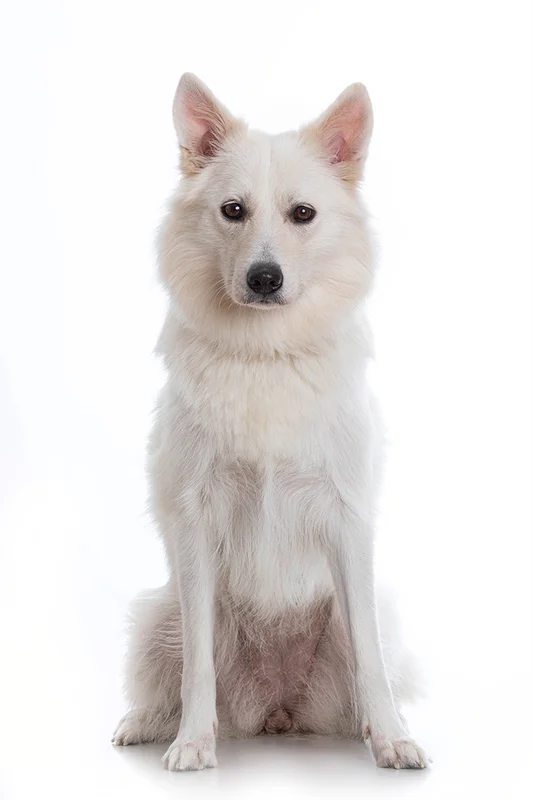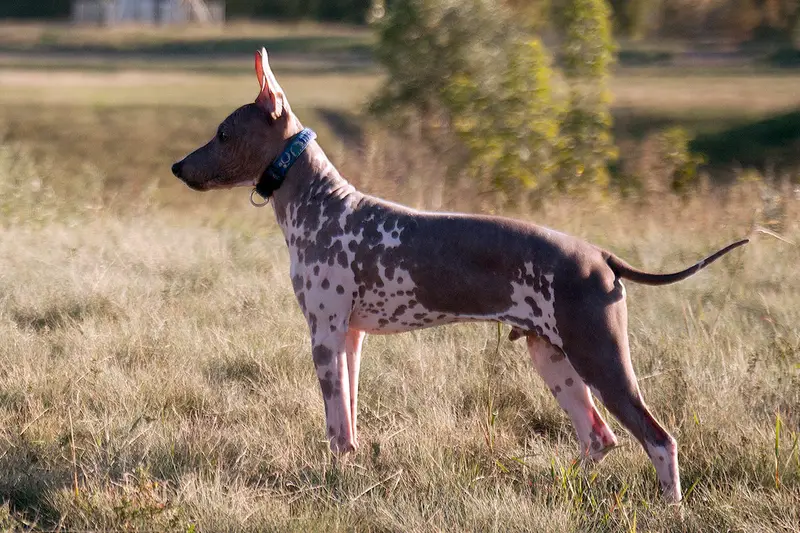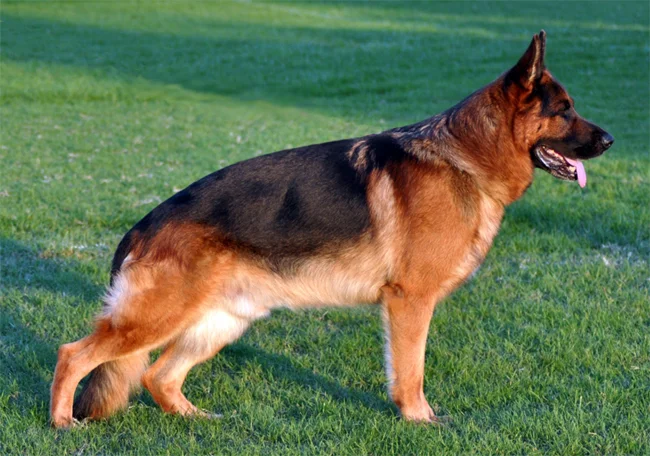American Bully
The American Bully is a loyal and affectionate breed known for its strength and versatility. Ideal for families, they thrive on exercise and companionship.
Overview
🐕Breed Overview
✨Key Traits
💡What Makes American Bully Special
One of the standout traits of the American Bully is its loyalty. They are known to be fiercely devoted to their families, often following their owners around the house and seeking attention.
Their playful nature makes them great companions for children, as they enjoy interactive play and are generally patient with younger family members. Additionally, their intelligence allows them to learn commands quickly, making training a rewarding experience.
American Bullies also have a strong protective instinct, which can make them excellent guardians for their homes. This combination of traits makes them well-suited for family life and companionship.
The American Bully is a breed that embodies strength, loyalty, and affection. With its origins rooted in the United States, this breed was developed to create a companion dog that combines the athleticism of the American Pit Bull Terrier with a friendly demeanor. American Bullies come in various sizes, including Standard, Classic, Pocket, and XL, each showcasing a muscular build and a broad head.
Their short coat is easy to maintain, making them suitable for families and individuals alike. Personality-wise, American Bullies are known for their loving nature and strong bonds with their families. They are playful and energetic, making them great companions for children and active households.
Their protective instincts also make them excellent watchdogs, alerting their owners to any potential threats while remaining gentle and affectionate with loved ones. Daily living with an American Bully involves regular exercise and mental stimulation. They thrive on walks, playtime, and engaging activities that challenge their minds.
Training should be consistent and positive, focusing on socialization and obedience to ensure they grow into well-rounded adults. American Bullies are adaptable and can thrive in various living situations, from apartments to homes with large yards, as long as their exercise needs are met. In terms of health, American Bullies are generally robust, but like all breeds, they can be prone to certain health issues.
Regular veterinary check-ups, a balanced diet, and proper exercise can help maintain their health and longevity. With an average lifespan of 10 to 12 years, these dogs can be cherished companions for many years. Overall, the American Bully is a breed that excels in companionship, loyalty, and versatility.
Whether as a family pet, therapy dog, or active participant in dog sports, they bring joy and love to their owners, making them a popular choice for dog lovers everywhere.
🎉Fun Facts
American Bullies are known for their gentle nature despite their muscular appearance.
American Bullies excel in obedience and agility competitions, showcasing their intelligence and trainability.
The breed comes in various sizes, including Pocket, Standard, and XL, each with unique traits.
They are often referred to as 'nanny dogs' due to their protective instincts towards children.
Breed Characteristics
Family & Friends
Good Behavior
Get Up & Go
Household Harmony
Temperament & Personality
✨Key Traits
🐕Core Temperament
The American Bully has a temperament that is both friendly and protective. They are known for their affectionate nature, often seeking physical closeness with their owners.
This breed is typically good with children and can be socialized to get along well with other pets. However, early socialization is crucial to ensure they are comfortable around strangers and other animals.
While they can be strong-willed, consistent training and positive reinforcement help them develop into well-mannered companions. Their protective instincts make them alert watchdogs, but they are generally not aggressive unless provoked.
💫Personality Profile
The American Bully is known for its friendly and affectionate personality. They are highly social dogs that thrive on human interaction and companionship.
With a playful demeanor, they enjoy engaging in games and activities with their families, making them excellent companions for children. Their protective nature ensures they are vigilant watchdogs, always alert to their surroundings.
Despite their strong appearance, American Bullies are gentle and loving, often forming deep bonds with their owners. They are adaptable and can fit into various lifestyles, whether in an active household or a more relaxed environment.
🔊Vocal Tendencies
American Bullies are generally not excessive barkers. They may bark to alert their owners of strangers or unusual sounds, but they are not known for constant vocalization.
Their barking is typically moderate, and they can be trained to minimize unnecessary barking. They may also express themselves through other vocalizations, such as whining or grunting, especially when seeking attention or during playtime.
Overall, their noise level is manageable, making them suitable for various living situations.
Affection & Social Traits
Energy & Activity
Communication Style
Care Requirements
🏃♂️Exercise Requirements
Daily Exercise
The American Bully is a medium to high-energy breed that requires regular exercise to maintain its physical and mental well-being. Ideally, they should engage in at least 60 minutes of exercise daily, which can be broken down into multiple sessions.
Activities can include brisk walks, jogging, playing fetch, or engaging in dog sports such as agility or obedience training. Puppies may require shorter, more frequent play sessions to accommodate their developing bodies, while senior dogs may benefit from gentler activities to avoid strain.
Regular exercise helps prevent obesity, reduces behavioral issues, and promotes cardiovascular health. Insufficient exercise can lead to weight gain, destructive behaviors, and increased anxiety or hyperactivity.
Preferred Activities
🏠Living & Adaptability
Space Requirements
American Bullies adapt well to various living environments, including apartments and homes with small or large yards. However, they thrive best in homes with access to outdoor space where they can run and play.
For apartment dwellers, it's essential to ensure they receive ample exercise and mental stimulation through daily walks and playtime. Their size and energy level mean they need enough room to move around comfortably, and lack of space can lead to frustration and destructive behavior.
Climate Preference
🍲Feeding Guide
Schedule
Food Types
Portion Size
Special Nutritional Needs
American Bullies may require a diet rich in protein to support their muscular build. It's essential to monitor their weight, as they can be prone to obesity.
Some may have food sensitivities, so a grain-free or limited-ingredient diet may be beneficial. Regular veterinary consultations can help determine specific dietary needs.
✨Grooming Requirements
Grooming Overview
The American Bully has a short, smooth coat that requires minimal grooming. Regular brushing with a rubber grooming mitt or a soft brush helps remove loose hair and distribute natural oils, keeping the coat healthy and shiny.
Bathing should be done as needed, typically every few months or when they become particularly dirty. Regular nail trimming and dental care are also essential to maintain overall health.
Care Schedule
Brush weekly; bathe as needed (every 1-3 months); trim nails every 2-4 weeks.
Health Profile
⚕️Health Care
Regular veterinary check-ups, vaccinations, and preventive care are vital for maintaining the health of an American Bully. Early detection of health issues through routine examinations can significantly impact their lifespan. Owners should also be proactive in managing their dog's weight and providing a balanced diet to prevent obesity-related health problems.
Health Issues Overview
⏳Average Lifespan
Genetic Factors
Genetics play a significant role in the American Bully's lifespan, with certain hereditary conditions affecting their health. Responsible breeding practices that prioritize genetic diversity can help reduce the risk of inherited health issues. Potential owners should research breeders and consider health testing to ensure they are selecting a healthy puppy.
Living Conditions
American Bullies thrive in environments that provide adequate exercise and social interaction. Living in a home with a yard allows for play and exploration, which can positively impact their lifespan.
Additionally, a stable and loving environment reduces stress, contributing to overall health. Regular veterinary care and a balanced diet are also crucial for longevity.
🏥Common Health Issues
Hip Dysplasia
Warning Signs
🔬Diagnosis
Veterinarians diagnose hip dysplasia through physical examinations and X-rays.
💊Treatment
Weight management, pain relief medications, and in severe cases, surgery.
📝Management Tips
Maintain a healthy weight, provide joint supplements, and engage in low-impact exercises.
Skin Allergies
Warning Signs
🔬Diagnosis
Diagnosis is typically through skin tests and allergy testing.
💊Treatment
Medications, topical treatments, and dietary changes.
📝Management Tips
Identify allergens, use hypoallergenic products, and maintain a clean environment.
Dental Disease
Warning Signs
🔬Diagnosis
Veterinarians diagnose dental disease through oral examinations and X-rays.
💊Treatment
Professional dental cleaning and possible tooth extraction.
📝Management Tips
Regular dental cleanings and at-home dental care can help prevent issues.
🛡️Preventive Care
🔬Hip Evaluation
Hip Evaluation assesses the hip joints for dysplasia and other abnormalities, crucial for preventing mobility issues.
📅 Annually after 2 years of age.
🔬Allergy Testing
Allergy Testing identifies specific allergens affecting the dog, helping to manage skin conditions and improve quality of life.
📅 As needed, especially if symptoms arise.
🔬Dental Check-up
Dental Check-ups evaluate oral health and prevent dental disease, which is common in this breed.
📅 Every 6-12 months.
Training
🧠Intelligence & Trainability
💪Work Drive
American Bullies thrive on mental and physical stimulation. They enjoy tasks that challenge their intelligence, such as obedience training, agility courses, or interactive games.
Providing them with jobs, like fetching items or participating in dog sports, can help satisfy their work drive and keep them mentally engaged. Without sufficient stimulation, they may become bored and exhibit undesirable behaviors.
⚠️Training Considerations
American Bullies can exhibit stubbornness and a strong-willed nature, which may pose challenges during training. Consistent, positive reinforcement methods work best, as harsh training techniques can lead to fear or aggression.
Socialization from a young age is crucial to prevent any potential behavioral issues, as these dogs can be wary of strangers if not properly introduced. Providing mental stimulation through puzzle toys and training exercises can help mitigate boredom-related behaviors, such as chewing or digging.
📝Training Tips
Training an American Bully requires patience and consistency. Start with basic obedience commands, using treats and praise to encourage good behavior.
Socialization is key; expose your dog to various environments, people, and other animals to foster confidence and reduce anxiety. Incorporate fun activities like agility training or obedience classes to keep them engaged.
Regular training sessions should be short and enjoyable to maintain their interest and enthusiasm.
History & Heritage
📜Origin Story
The American Bully's origin can be traced back to the late 20th century when breeders sought to create a companion dog that combined the strength and athleticism of the American Pit Bull Terrier with a more approachable temperament. This breed was developed by crossing various bulldog breeds, including the American Staffordshire Terrier and the English Bulldog, resulting in a dog that is muscular yet friendly.
The American Bully quickly gained popularity in urban areas, where its loyal and affectionate nature made it a favored choice for families. As the breed evolved, it became recognized for its diverse appearances and friendly demeanor, leading to its establishment as a distinct breed in the canine community.
⏳Development History
The American Bully was developed in the 1990s, primarily in the United States, as a companion breed. Breeders aimed to create a dog that retained the strength and athleticism of the American Pit Bull Terrier while emphasizing a more stable temperament and a variety of physical appearances.
Over the years, the breed has been refined through selective breeding, resulting in different size categories, including Standard, Classic, Pocket, and XL. The American Bully has become recognized by various registries, and its popularity continues to grow as more people appreciate its friendly nature and loyalty.
🛡️Purpose & Historical Role
Originally bred as a companion dog, the American Bully has evolved to serve various roles in society, including family pets, therapy dogs, and even working dogs in some cases. Its strong build and protective instincts make it a reliable guardian, while its affectionate nature allows it to bond closely with family members. The breed's versatility has led to its involvement in various dog sports and activities, showcasing its intelligence and eagerness to please.
🏺Cultural Significance
The American Bully has gained popularity in recent years as a companion dog, often celebrated for its loyalty and affectionate nature. Originating from the United States, this breed has roots in the American Pit Bull Terrier and was developed to create a more family-friendly dog with a stable temperament.
The breed has been featured in various media, showcasing its versatility as a family pet and working dog. Its cultural significance is also reflected in the growing community of enthusiasts who participate in dog shows and events, promoting responsible ownership and breed education.
Conservation Status
This breed is well-established with healthy population numbers.









